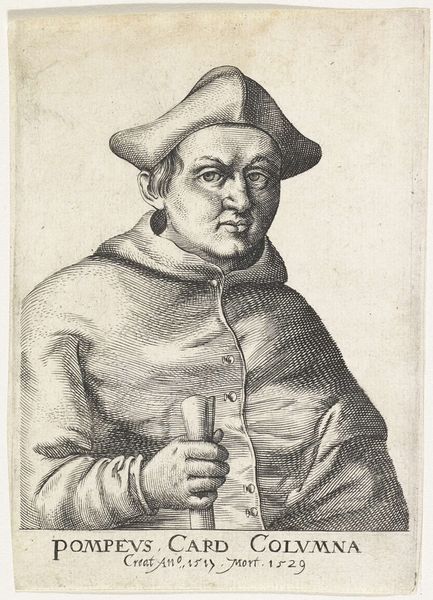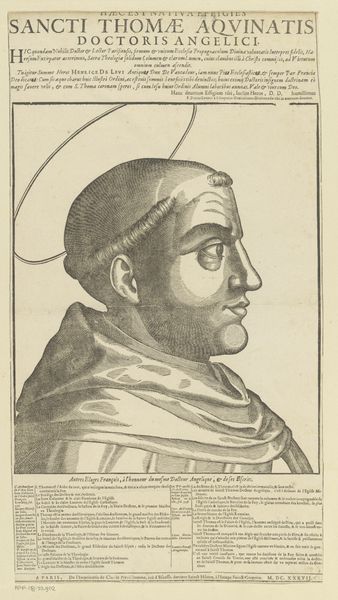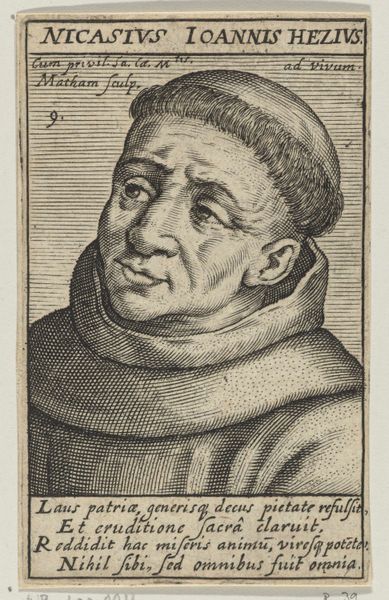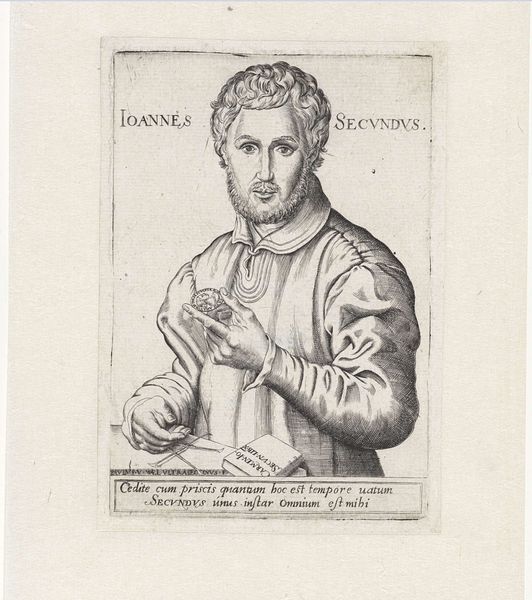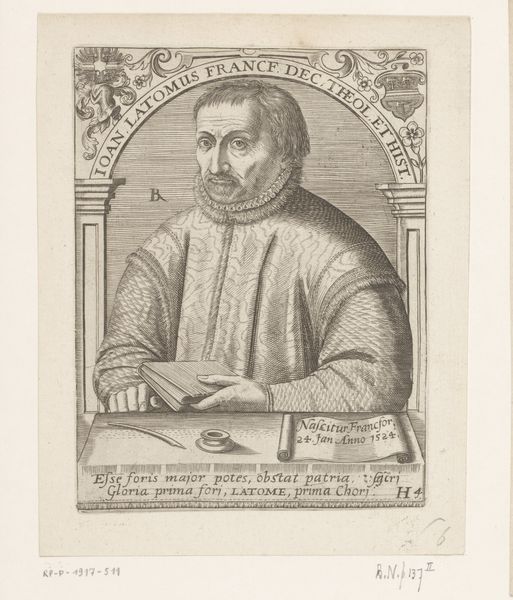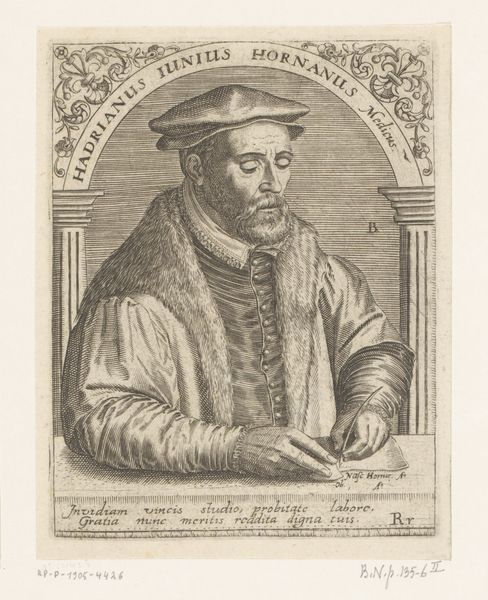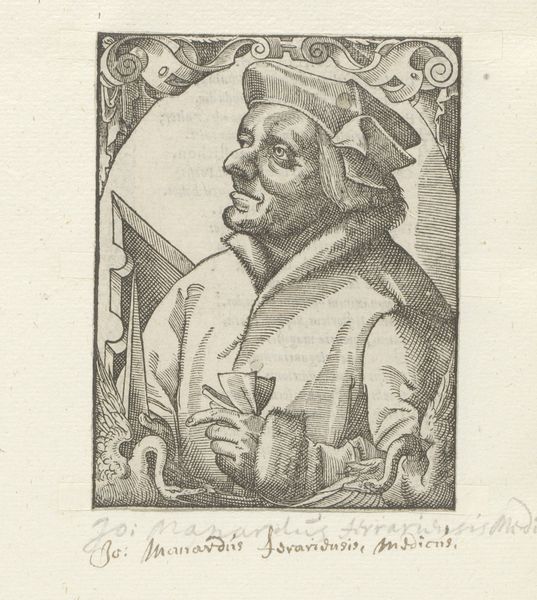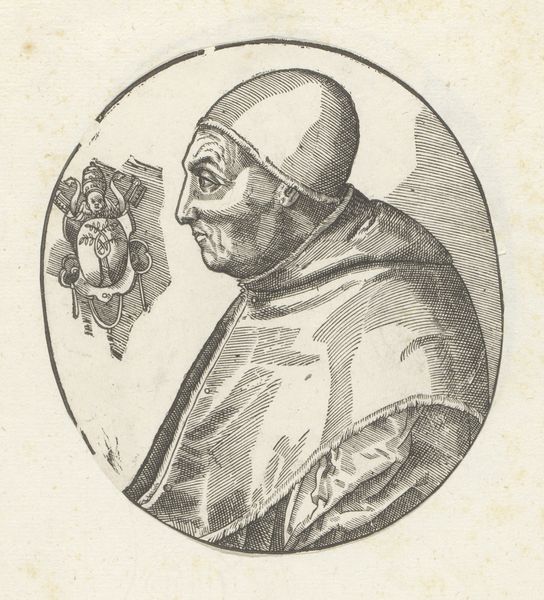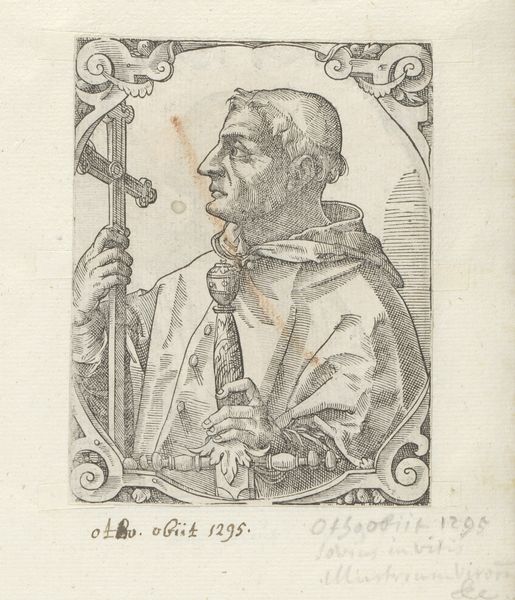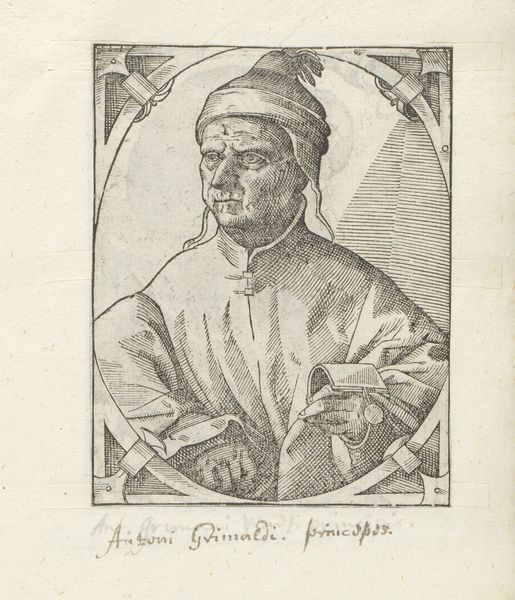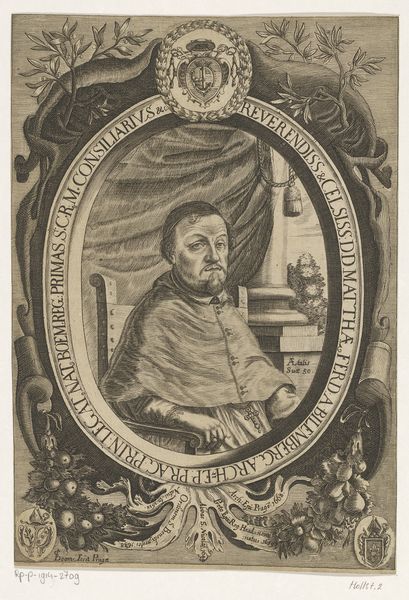
print, engraving
#
portrait
#
baroque
# print
#
old engraving style
#
caricature
#
history-painting
#
engraving
Dimensions: height 181 mm, width 137 mm
Copyright: Rijks Museum: Open Domain
Editor: So this is Nicolas de Larmessin’s “Portrait of Gianfrancesco Rustici,” an engraving from 1682. The cross-hatching is so precise! It's amazing the detail he could achieve with lines alone. It's a portrait of an artist, complete with his tools. What jumps out at you when you look at it? Curator: Well, I am immediately drawn to the material process itself. Consider the labor involved in creating such a detailed engraving. Each line is a deliberate act, a transfer of skill from hand to plate to paper. The act of engraving wasn't merely reproductive, it was transformative. It changed an image to an object circulating amongst people. Editor: Transformative in what way? Curator: Think about the role prints like this played. It's not just about depicting Rustici; it's about manufacturing and circulating his image, turning him into a brand, really. This wasn’t just art; it was a commodity produced within a network of skilled laborers and patrons. Engravings like this were integral in shaping artistic reputations and disseminating knowledge. Look at his tools! The composition is about celebrating his craft, his practice. What do you notice about that aspect? Editor: Now that you mention it, the way he holds his compass and the other tools, they're front and center! They definitely tell a story about valuing skilled labor. Curator: Precisely. The means of production is part of the message. It challenges the hierarchy that separates ‘high’ art from ‘craft’. We need to analyze art based on its role in production and circulation within its cultural context. Editor: I see your point. I was initially focused on it as a portrait, but thinking about the means of production gives it a whole new dimension! Curator: Indeed, it provides insight into 17th-century artistic culture. Now it's no longer about one man; the print represents the value system of a certain group of individuals.
Comments
No comments
Be the first to comment and join the conversation on the ultimate creative platform.
